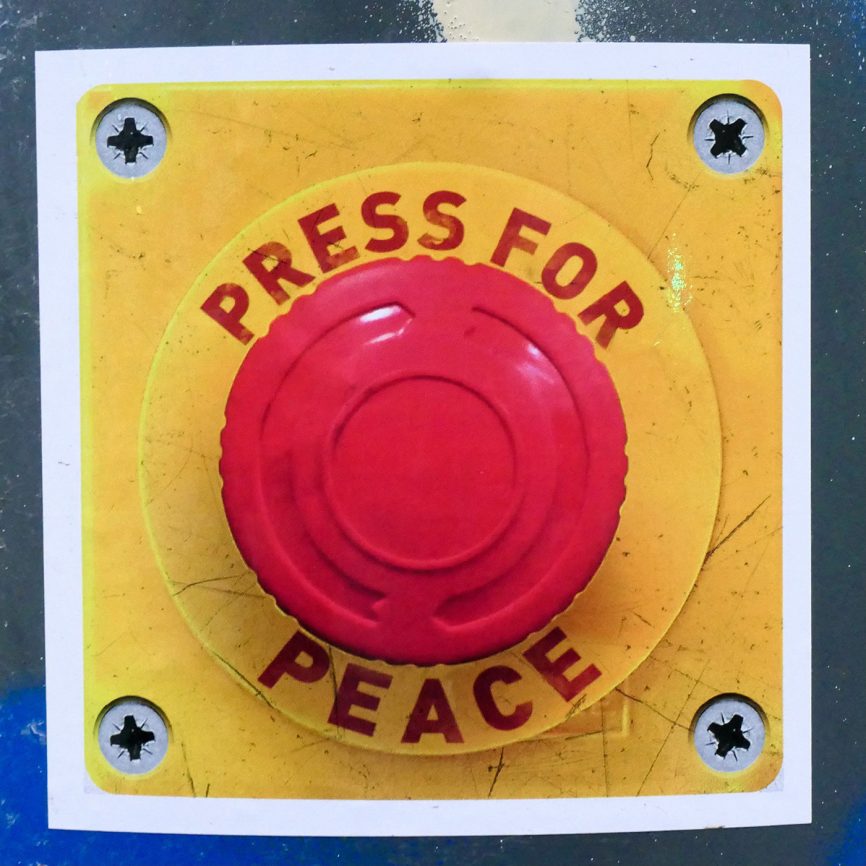by: Rev. Gregg Carlson
In the 1960s, Northern Ireland began a period of conflict called the “Troubles.” Through a series of social and political injustices, Northern Ireland had become a religiously divided society between historically Irish Protestants and Catholics. The British government which has ruled Northern Ireland since 1066, sent troops to Belfast “to calm the violence” but in many ways made it worse.
On August 10th,1976, Anne Maguire and her young children were walking along a road in Belfast. Suddenly, a car slammed into them. The car was being driven by a suspected IRA gunman, who moments before had been shot dead by pursuing British soldiers. The mother was the only survivor. The collision killed all four of her young children.
The next day, Anne’s sister, Mairead Corrigan who had reached a breaking point of grief, anger, and frustration began to organize women in her Catholic neighborhood to march against the violence. To march for peace. This became a series of marches involving many women beyond her neighborhood. They became internationally noted because of the number of young mothers pushing baby carriages, of mothers marching who had lost sons and daughters to the violence, and the hundreds of nuns leading the singing of peace songs.
Soon another mother, Betty Williams would likewise begin organizing women in her Protestant neighborhood to march in solidarity for peace. Soon the women worked together and over four months well over 100,000 mothers were marching for peace. Culminating in the largest of the marches that met at what is now called the Peace Bridge between Northern Ireland and the Irish State.
What did these women want to see happen?

The Peace People’s Declaration:
“We have a simple message to the world from this movement for Peace. We want to live and love and build a just and peaceful society. We want for our children, as we want for ourselves, our lives at home, at work, and at play to be lives of joy and Peace. We recognize that to build such a society demands dedication, hard work, and courage. We recognize that there are many problems in our society which are a source of conflict and violence. We recognize that every bullet fired and every exploding bomb makes that work more difficult. We reject the use of the bomb and the bullet and all the techniques of violence. We dedicate ourselves to working with our neighbors, near and far, day in and day out, to build that peaceful society in which the tragedies we have known are a bad memory and a continuing warning.”
In 1977, Betty Williams and Mairead Corrigan received the Nobel Prize for Peace.
One observer said this about The Peace People marches.
They made a substantial impact. They helped to de-legitimize violence, increased solidarity across sectarian lines, and developed momentum for peace. Although the violence did not fully subside until 1998 with the negotiation of political change, Ireland saw in 1976 one of its most dramatic decreases in political violence, accompanying the Peace People’s marches and rallies. The campaign dramatized how tired the people were of bloodshed, their desperate desire for peace, and the clear possibility of alternatives.
Since the peace agreement in 1998, there has been relatively no violence in Northern Ireland and the Irish State. When you are traveling in Ireland you pass from the Country of Ireland to Northern Ireland in Great Britain with no border stations. “Peace” is more than an end to violence, it starts there—the healing from the violence and trauma that takes time. The memory of the “Troubles” remains in the psyche of the Irish people.
Ireland remains an Island divided into two countries. Northern Ireland while it has greater autonomy since the 1998 peace accords remains part of Great Britain. There may come a day when Ireland is a united people, one nation, one island, but not today. And yet they seek to live out the tensions of memory, division, and peace.
The Irish peace movement is a powerful illustration of “blessed are the peacemakers”. Peacemaking is not easy, it is not accomplished in an instant. As U-2 points out in the lyrics of their song “MLK”, King’s dreams for our country are not yet realized. Conflict, war, gun violence, and hatred seem to be the daily headlines. But we are called to be peacemakers.
How can we put peacemaking into practice? It begins by seeing each other as God/Jesus sees us. That all of us are children of God (to see that not just in those who are like us, and agree with us, but in those who do not). The love of God we are called to share in the world has no boundaries. But our use of language of how we communicate with one another can get in the way of expressing peace and love. I also recognize that some of us were raised to see peacemaking as glossing over conflict not acknowledging boundary violations in our own lives by others. So many continue to deal with the trauma of dysfunctional families, broken relationships, and bullying.
Convergence teaches principles of healthy communication to churches to help them overcome unhealthy communication patterns and conflict. Here are some practices I have learned from this work that you can try in your daily conversations:
- Observe and listen to what the other person is saying without evaluating.
- Express your feelings using “I” statements.
- Listen attentively, then reflect to the person what you hear.
- Express appreciation regularly.
- Maintain awareness, and be fully present, up to 80% of communication is non-verbal if you are not fully present with someone you likely will miss much of what is being said.
- Be patient and persistent in using non-violence in your words in your conversations. So much of our spoken language is filled with idioms of violence.
If your congregation could benefit from receiving training in healthy communications and conflict transformation contact Convergence today.

